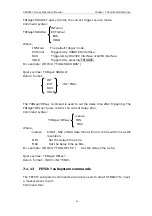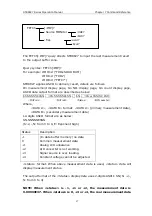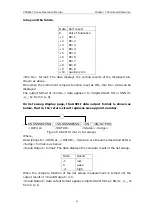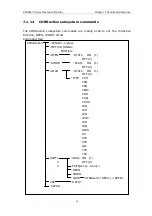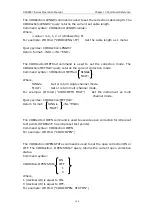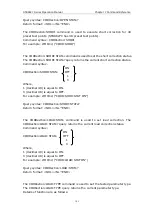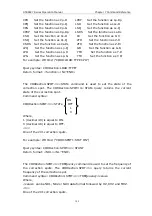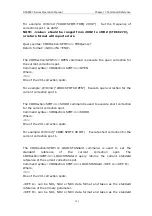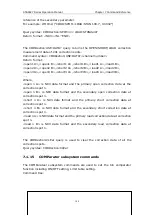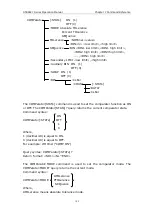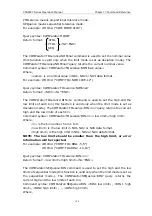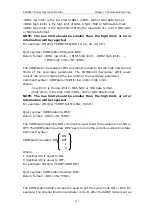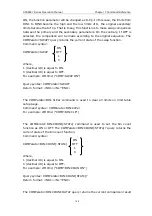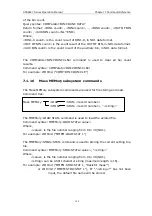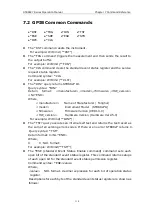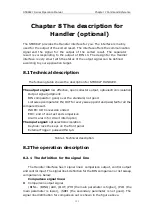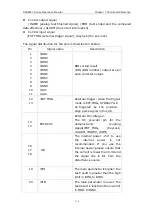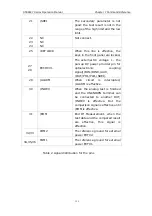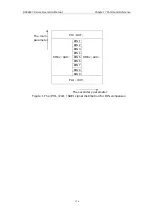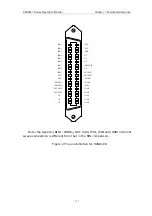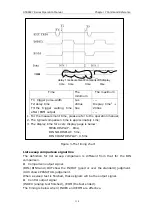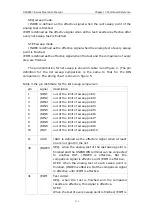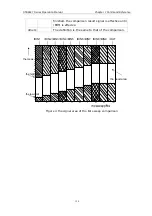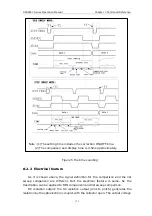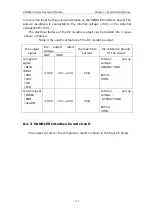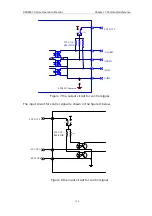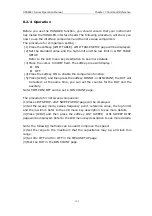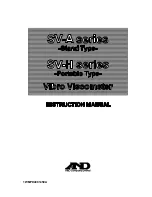
STB8827
Series Operation Manual Chapter 7 Command Reference
7.2
110
GPIB Common Commands
●
*IDN
●
*ESR
●
*RST
●
*ESE
●
●
*TST
●
*STB
*OPC
●
*TRG
●
*SRE
●
*CLS
The *RST command resets the instrument.
For example: WrtCmd (“*RST”)
The *TRG command triggers the measurement and then sends the result to
the output buffer.
For example: WrtCmd (“*TRG”)
The *CLS command clears the standard event status register and the service
request status register.
Command syntax: *CLS
For example: WrtCmd (“*CLS”)
The *IDN? query returns
STB8827
ID.
Query syntax: *IDN?
Return
format:
<manufacturer>,<model>,<firmware>,<HW_version>
<NL^END>
Where,
<manufacturer> Name of Manufacturer ( Tonghui)
<model>
Instrument Model (
STB8827
A)
<firmware> Firmware Version (VER1.0.0)
<HW_version> Hardware Version (Hardware Ver A5.0)
For example: WrtCmd(“*IDN?”);
The *TST? query executes an internal self test and returns the test result as
the sum of all existing errors codes. If there are no error
STB8827
returns 0.
Query syntax: *TST?
Return format: 0<NL^END>
Where,
0
0
(
NR1 format
)
For example: WrtCmd(“*TST?”);
The *ESE (standard Event Status Enable command) command sets each
open bit of the standard event status register. This command returns setups
of each open bit for the standard event status permission register.
Command syntax: *ESE<value>
Where,
<value> NR1 format
:
decimal expression for each bit of operation status
register.
Descriptions for each byte of the standard event status register are shown as
follows:

